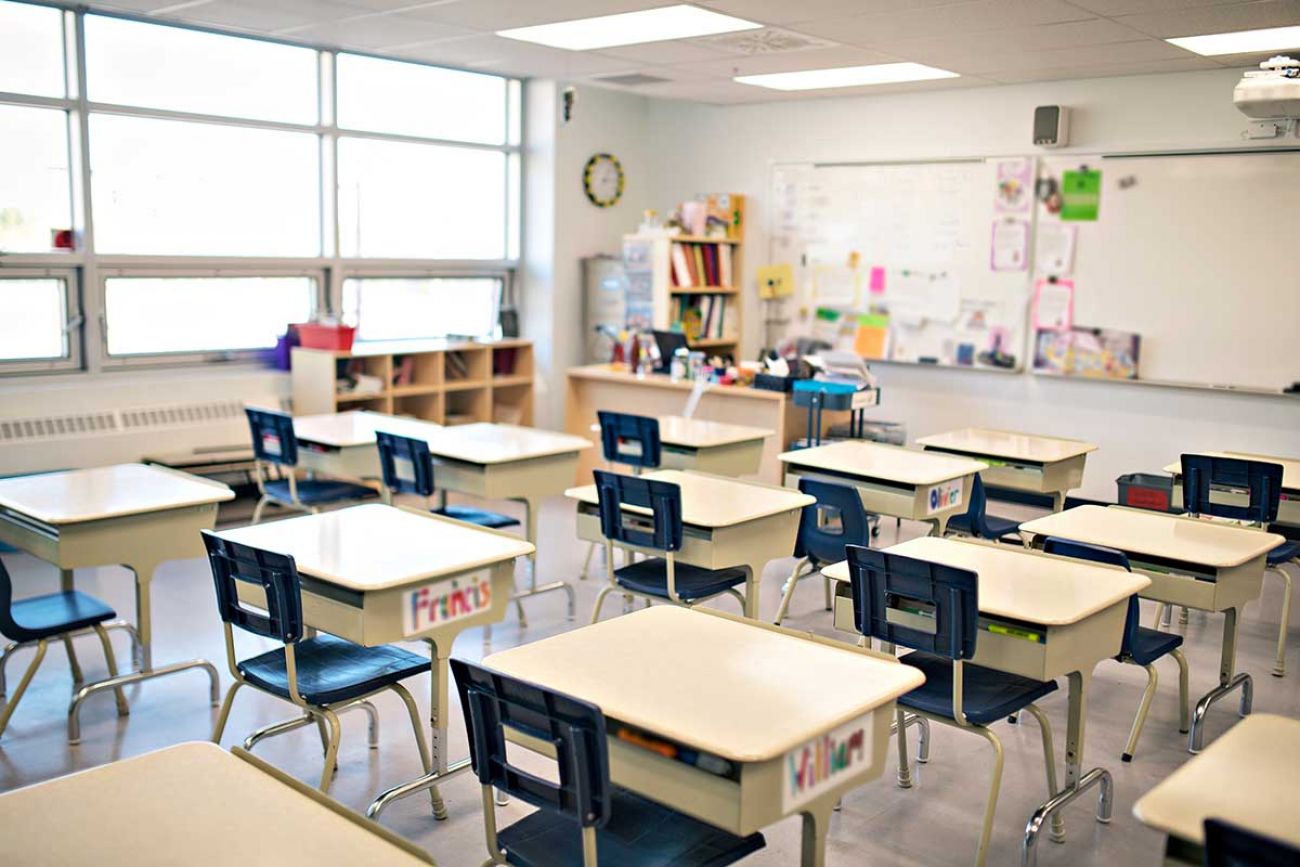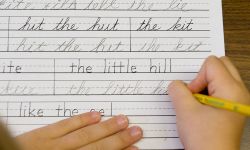1-in-4 Michigan students tested through 8th grade showed no learning growth

Roughly 1-in-4 elementary and middle school students in Michigan showed no academic growth this past fall compared to a year earlier, underscoring the profound impact the pandemic had on young learners.
The analysis comes from the Education Policy Innovation Collaborative (EPIC) at Michigan State University, and included, among other things, a comparison of how students who learned remotely performed compared to those who spent at least some time in physical classrooms.
EPIC director and professor of education policy Katharine Strunk told Bridge Michigan the report is helpful in showing that school leaders should maximize the amount of in-person instruction for students.
Related:
- Michigan hopeful students will return to public schools after COVID exodus
- Michigan students forced online by COVID learned less than those in schools
- Michigan student test scores slump, as COVID halts slow progress
The report analyzes student performance in benchmark tests last fall and, when available, compared it to fall 2020. The analysis is based on test results for the roughly 80 percent of the state’s 935,000 K-8 students who took the assessments.
This information is based on aggregate data, not comparing individual students’ growth.
Students took these tests in highly unusual school years where they faced virtual learning and closures due to illness or staff quarantines. Students were also required to wear masks and distance from each other to reduce the spread of COVID-19. EPIC researchers acknowledge the data is “imperfect” and “incomplete.”
Strunk told Bridge Michigan it’s “critically important” to assess and understand what the students who showed no growth on these benchmark exams need to recover academically.
EPIC prepared the report in collaboration with the Michigan Department of Education, the Center for Educational Performance and Information (CEPI), the Michigan Data Hub (MDH) and the Michigan Education Data Centers (MEDC) at the University of Michigan.
The data collection was ordered by state lawmakers to better understand the student learning and progress during the COVID-19 pandemic.
This report is the third in the series shared with state leaders. The first report was published in August 2021 and the second report was published in December 2021.
According to the report, about three quarters of K-8 Michigan students demonstrated academic growth from fall 2020 to fall 2021.
Researchers used median growth for students with similar prior achievement scores before the pandemic.
In a typical year, researchers would expect about 50 percent of students to reach growth targets. Across all grade levels, subjects and assessment providers, 41 percent of students met or exceeded growth targets, 35 percent made partial progress to growth targets and 24 percent either had scores that decreased or didn’t change from the prior year.
There are still gaps amongst racial and socioeconomic groups but they do not appear to have grown over the pandemic, the report states.
Researchers compared different subgroups with the largest subgroup, white students in Michigan using the NWEA’s MAP Growth assessment. On average:
- Black students scored between the 15th and 22nd percentiles of white students’ math scores
- Latino students scored between the 30th and 32nd percentile of white students’ math scores.
- Asian students scored between the 67th and 76th percentiles of white students’ math scores, and
- Economically disadvantaged students scored between the 18th and 25th compared to those who are not economically disadvantaged.
Researchers call the gaps a “serious problem” but say they are comparable to achievement gaps on Michigan’s M-STEP and PSAT assessments in 2018-2019. They also acknowledge that Black and Latino students, economically disadvantaged students and English language learners, were underrepresented in this analysis.
There also were gaps between students who were in-person compared to students receiving remote instruction, at least in the short term.
Students in districts that operated fully remotely for the 2020-2021 school year experienced less academic growth than students in districts that provided at least some in-person learning. Math and reading gaps were typically smaller for students in districts that received at least some in-person instruction compared to students in districts that were fully remote.
“This suggests that access to even a limited amount (of) in-person instruction was beneficial for student achievement,” the report states.
The report adds, however, that “decreases in gaps from spring 2021 to fall 2021 may indicate that students who received less in-person instruction in 2020-21 are starting to catch up to their peers now that most of their districts have resumed in-person instruction.”
“Given the difficulties a lot of districts have encountered this year because of shortages and COVID and safety, I think it accentuates the need for more of what we call ‘seat time,’ more time where kids are learning in person with trusted adults who are qualified,” Strunk told Bridge.
“And so it would be great if as we're trying to accelerate learning going forward, if we saw ways to increase students’ time in person in schools.”
Where do we go from here?
Strunk said it is important to keep collecting this data.
The report acknowledged the data was less than perfect. Participation rates were lower than for a typical end-of-year summative assessment and there were lower assessment participation rates amongst Black, Latino and economically disadvantaged students.
Researchers also document an “at-home advantage” for early elementary students in fall 2020, where it’s possible parents or caregivers helped students with assessments. Researchers found “unrealistically high average scores in lower grade levels, often significantly higher than pre-pandemic norms.” That made it more challenging to assess growth in this cohort of students.
Strunk also said it is important to use targeted efforts for students who made no or negative achievement growth during the 2020-2021 school year
Researchers noted that “substantial proportions of Michigan students are doing well, and substantial proportions suffered from missed learning opportunities.”
Therefore, they urge state leaders and local educators to devote more resources to students who made no or negative achievement growth last school year, while taking into account that it’s possible some students had artificially high growth scores in 2020.
Strunk said increasing seat time by either expanding the school day or the school year would accelerate student learning. So too would one-on-one tutoring and small group tutoring targeted for struggling students, she said.
Since growth data is on the aggregate level — not individual student level — it has limitations. Strunk said the state might consider tracking how school districts try to accelerate growth amongst the students struggling the most. Another option is for lawmakers to give researchers the ability to assess data on the individual student level.
Michigan Education Watch
Michigan Education Watch is made possible by generous financial support from:
Subscribe to Michigan Education Watch
See what new members are saying about why they donated to Bridge Michigan:
- “In order for this information to be accurate and unbiased it must be underwritten by its readers, not by special interests.” - Larry S.
- “Not many other media sources report on the topics Bridge does.” - Susan B.
- “Your journalism is outstanding and rare these days.” - Mark S.
If you want to ensure the future of nonpartisan, nonprofit Michigan journalism, please become a member today. You, too, will be asked why you donated and maybe we'll feature your quote next time!






